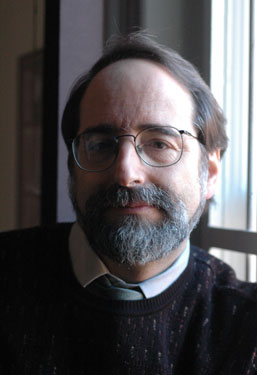Lawrence Weschler

[Photo by Robert Birnbaum] Inclement weather may have scuttled my chat this week with multifaceted writer Lawrence Weschler, but I want to take the opportunity to bang the drum loudly about the republication and updating of his early works on Robert Irwin and David Hockney, as well as the rest of his fascinating oeuvre—which most recently includes Everything That Rises: A Book of Convergences.
That tome may most clearly exhibit (if not ostensibly define) Weschler’s point of view. In a recent interview with fiction writer Kyle Minor (In the Devil’s Territory), Weschler responded to a question about convergence as a new literary form:
It’s not a form original to me. When I published the first one, I was sure to give credit where credit is due, to John Berger. After Che Guevara was killed, Berger wrote an essay that began with that famous photograph of the general. He said that we all know where this photograph came from. It’s based on Rembrandt’s Anatomy Lesson, a painting which is hotwired into everyone’s brain… The subtext—Che as Christ, as resurrection; the corpse of the thief in Rembrandt alludes to the corpse of Christ—taught me something. That was a huge, formative event for me. I think that’s how we tend to think anyway, but our thoughts are muffled by so much noise.”
But it should not go unsaid that while two books covering about three decades of conversation and intellectual exchange with two seminal, influential, and articulate artists constitutes an eloquent and original departure from traditional long-form journalism, what is especially interesting about Weschler’s dozen books is that his readers come to his work from so many different entry points. In my case it was his study of A Miracle, a Universe: Settling Accounts With Torturers, his 1990 account of torture under military dictatorships and the aftermath in Brazil and Uruguay and my discovery of the great progressive Uruguayan writer Eduardo Galeano that brought me to and kept me interested in Weschler.
